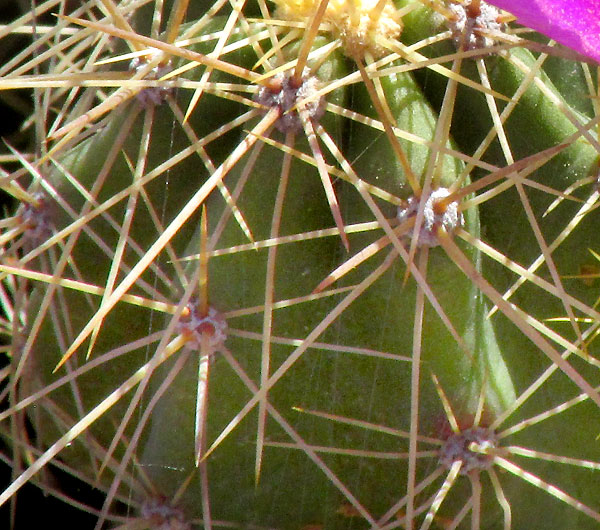Excerpts from Jim Conrad's
Naturalist Newsletter
entry dated May 18, 2022, notes from a camping trip among hills about 7kms ENE of Tequisquiapan, Querétaro state, MÉXICO
elevation about 2020m (6600 ft), near N20.57°, W99.85°
"HEDGEHOG" CACTUS
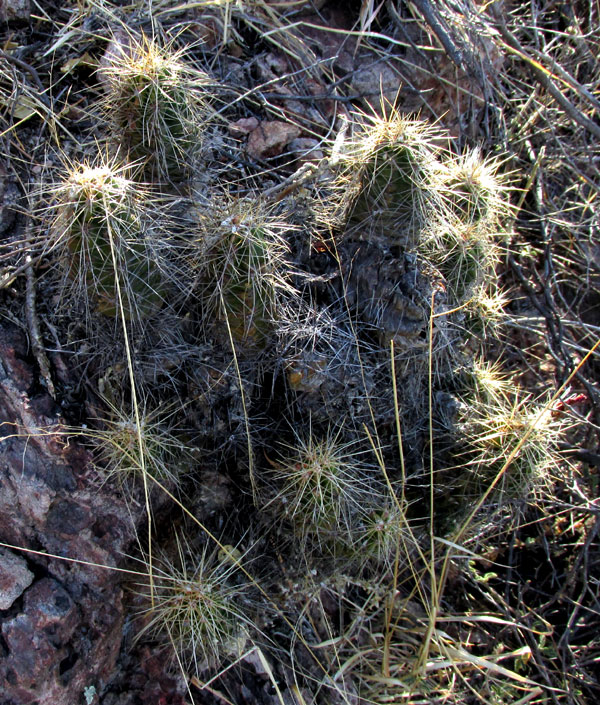
On an outcropping low wall of volcanic rhyolite rock, the midday sun was just beginning to illuminate the above cluster of spiny cacti, highlighting spines but keeping features of the green bodies in deep shade. However, the dried-up remains of one flower was sunlit:
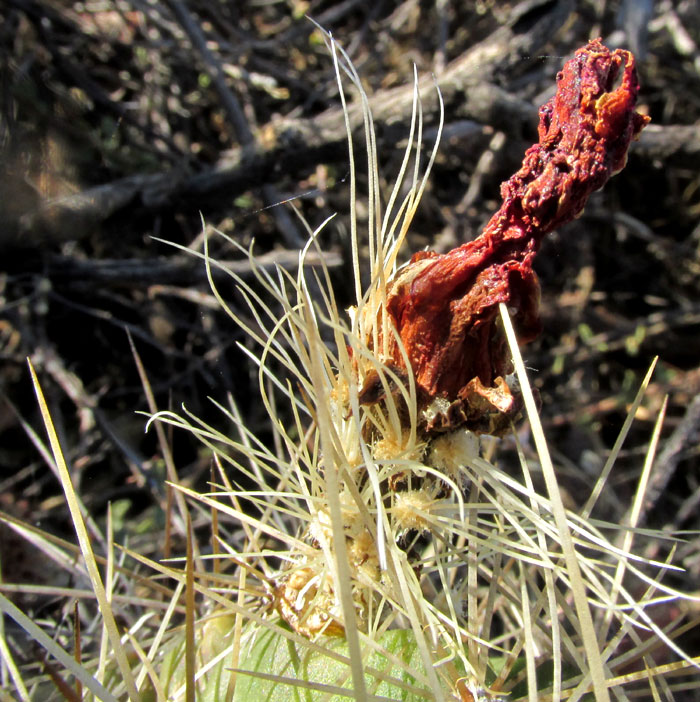
In the picture, below the withered corolla, the ovary -- the future fruit --is heavily invested with long, slender, curvy spines. This is a good field mark because the ovaries of some cactus types bear no spines. The spines themselves are distinctive, being so long, wavy and weak-looking. Spines atop the stems were straighter and firmer:
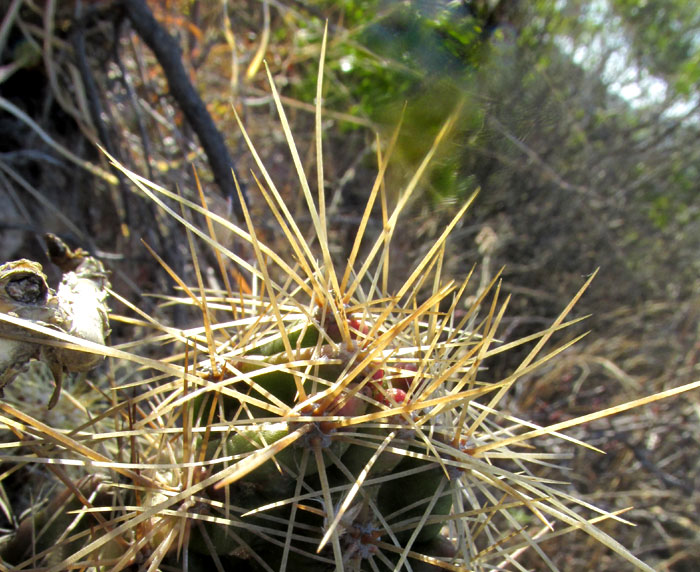
Still, up close you could see that often the spines broke, and still curved a little.
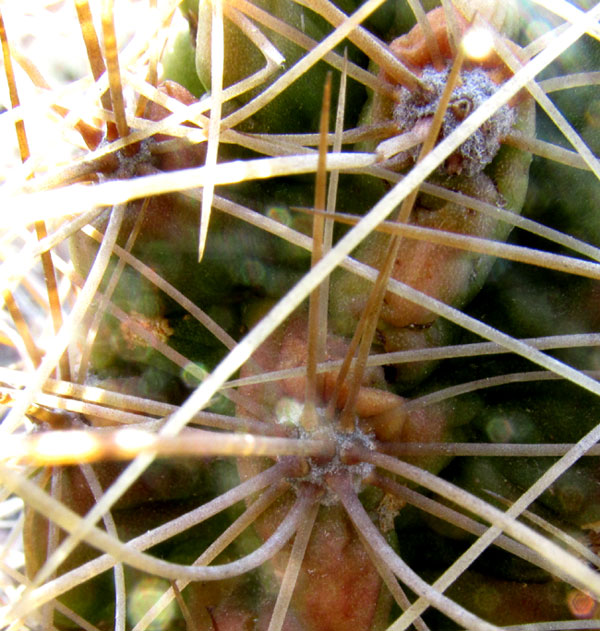
The spines were round in cross-section, not flattened as with many cactus species, and they arose from roundish areoles carpeted with short, woolly hairs.
With cacti that are neither pricklypears nor the kind that live in trees, the remaining species usually can be neatly divided into those whose body surfaces are sculpted into either vertical-running ridges, or spirals of rounded or pyramidal, roundish-topped or knobby mounds. Atop these ridges and individual mounds, from well defined spots called areoles, clusters of spines emerge. But, in the above picture, are the areoles with their spines atop ridges or mounds?
In this species we have ridges with especially shallow furrows between them, and the spiny areoles atop the ridges are separated from one another by low spots so that they form little mounds. Especially in dim light it can be hard to say whether on this cactus the ridges or mounds dominate, though in the literature this general type of cactus is said to be ridged.
This general type of cactus, which is columnar instead of ball-shaped or prickly-pear kind, but not very tall, often is called "hedgehog" -- short and bristly. That name is applied to cacti in at least three different genera, but the one we have here belongs to the genus Echinocereus. About 70 species of Echinocereus cacti are recognized, all native just to Mexico and the southern US. Mexico is home to about 45 species, and in our Bajío region of upland semiarid central Mexico, we have five.
This cactus is ECHINOCEREUS CINERASCENS, endemic just to Mexico from southern Tamaulipas state south to near Mexico City, the state of Tlaxcala. It's described as living in semiarid grassy scrub, between 1500-2200m in elevation (4900-7200 ft), and it's true that the fissures in the rhyolite cliff this one was growing in were mostly occupied with grass.
In fact, once the species was recognized, I realized that in the less-overgrazed grassy scrublands around Tequisquiapan this is a common species, often seen forming dense colonies of many short columns. When they flower, they're spectacular, and normally flowering takes place in April and May. However, this year the rains haven't arrived when they should and already in June they're still not flowering, except for a few populations with only one or two blossoms. Perhaps ours produced its one blossom because it's sheltered from much of the day's scorching sunlight.
When it's blossoming normally it's so spectacular that this is a much-planted species in pots and desert gardens. Also, it's a bit tolerant to cold weather.
entry dated June 2, 2022, issued from near Tequisquiapan, elevation about 1,900m (6200 ft), ~N20.57°, ~ W99.89°, Querétaro state, MÉXICO
A FLATLAND HEDGEHOG COLONY
After documenting the above cacti, and learning that normally the species flowers in April and May, I realized that because of our unusually rainless dry season -- no rain since Christmas -- and because the rainy season is late this year, the meager flowering I've been seeing may be all we have this year. So, below is a typical lowland colony of this species in the parched, overgrazed area around Tequisquiapan, with only three wilted blossoms showing:
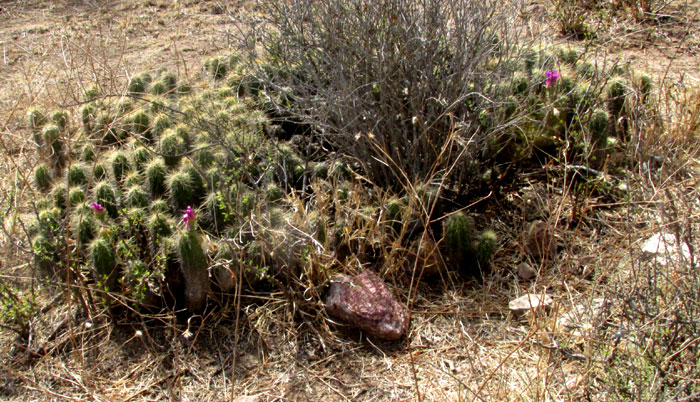
I'm told that in normal times such a colony may be covered with red blossoms.
entry dated June 6, 2022, issued from near Tequisquiapan, elevation about 1,900m (6200 ft), ~N20.57°, ~ W99.89°, Querétaro state, MÉXICO
FLOWERS AT LAST
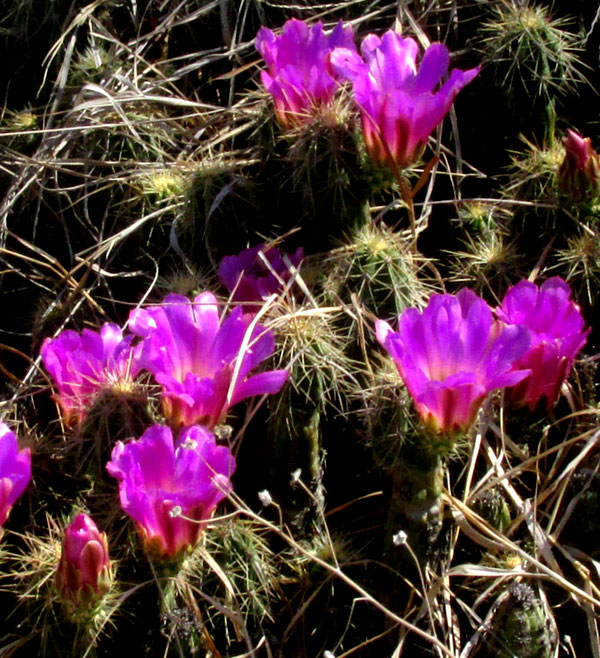
Finally about three days ago the first shower of the year, about 1.5mm of rain fell (1/16 inch), and now some parts of colonies of hedghog are flowering, shown above. Usually the blossoming takes place where there's some shade or on the downslope side. It's nothing like I've seen in pictures, but at least it's a flowering, late as it is.
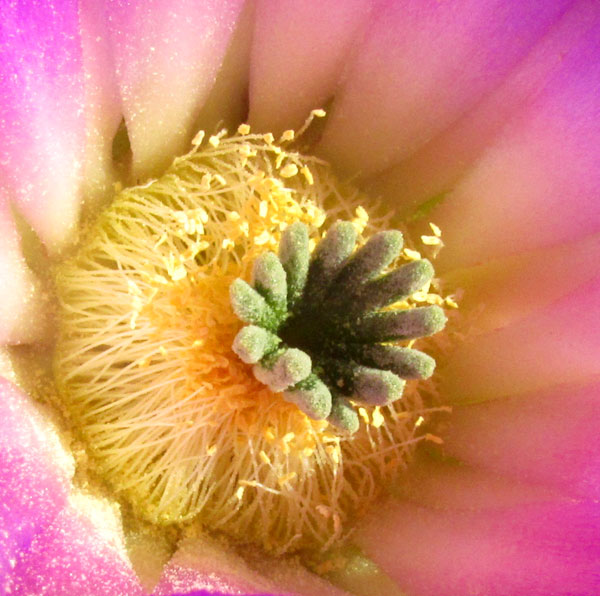
The above close-up shows a flower's green/gray stigma lobes and numerous stamens. And while we're at, here's a more revealing picture of the cactus body's ribs:
